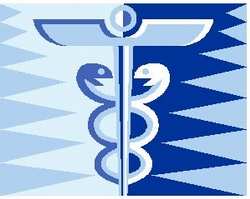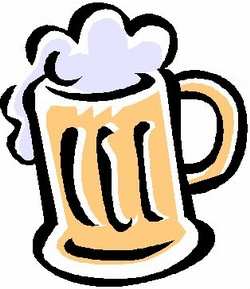 We must have started something.
We must have started something.
Since publication of yesterday's story, which detailed how
an American Airlines pilot was kept from the cockpit on a Little
Rock to St Louis flight Monday, we've gotten a lot of feedback from
highly-qualified medical experts.
Interestingly enough, our industry contacts won't call
back; the folks who make the equipment don't want to talk.
On another front, the Allied Pilots Association spokesman, Gregg
Overman, said the union's duty is to protect the pilot; but that he
actually didn't have any information to give us, on this particular
case.
That's OK, though, because we're really looking at the science
involved.
We asked, in our article, whether .004% BAC, as determined on
typical US airport (or police) analysis machines, could be a
reliable number. One doctor wrote us, "...0.02%...
constitutes the lowest reliable limit on their zero-tolerance
scale."
 Another wrote, "0.004% [is an]
insignificant, minuscule concentration. I doubt it is possible with
commonly used standard techniques to measure -- with any degree of
precision -- BAC at such low levels. And why bother?"
Another wrote, "0.004% [is an]
insignificant, minuscule concentration. I doubt it is possible with
commonly used standard techniques to measure -- with any degree of
precision -- BAC at such low levels. And why bother?"
We wondered if something other than the ingestion of
alcohol could deliver such a reading. Another doctor
wrote, "Ethyl alcohol and some other alcohols can be generated at
very low levels by bacterial fermentation in the human gut. This is
not a reliable way to get drunk as alcohols are carbohydrates and
are quickly metabolized at a rate of about 0.017% per hour
(typically 0.015 for males and 0.018 for females with variation on
the degree of enzyme activation due to repeat exposure-zero order
kinetics apply above 0.010%). It is also possible for someone to
consume a small amount of alcohol and get a BAT of 0.004%. Using
the Widmark equation of A=WRC/0.8, where A=volume of pure
ethyl alcohol consumed, W=body weight, C=BAT and R=distribution
ratio, or measure of fat. Typically R=68% for males and 55% for
females on average. Solve this equation for a 70Kg male, you get
2.38g of pure alcohol, or about half a teaspoon. Considering that
some mouthwashes are up to 25% alcohol, this is well within a
swallow... So spit it out." So, if you drink mouthwash, you can get
drunk; but who would?
 As to the question of whether a BAC
of .004% would have any measurable effect on a pilot's
ability, we got the following: "Based on experimental
research, it is generally agreed that a BAC as low as >0.02% can
impair a (young, untrained) pilot and reduce his IFR flying skills.
At BAC >0.04%, such impairment can be measured in trained
pilots. Many Civil Aviation Authorities around the world have set
0.04% as a legal limit for flying." Well, the pilot in question had
1/5 of that ".02%" on his breath...
As to the question of whether a BAC
of .004% would have any measurable effect on a pilot's
ability, we got the following: "Based on experimental
research, it is generally agreed that a BAC as low as >0.02% can
impair a (young, untrained) pilot and reduce his IFR flying skills.
At BAC >0.04%, such impairment can be measured in trained
pilots. Many Civil Aviation Authorities around the world have set
0.04% as a legal limit for flying." Well, the pilot in question had
1/5 of that ".02%" on his breath...
Here's an interesting one: alcohol on the breath
We wondered if the security agent who said he detected "alcohol"
on the pilot's breath could be believed. The answer is technically,
"no" -- but, for all practical purposes, a resounding, "yes."
Here's a few answers:
"The screener could not have detected alcohol on the pilot's
breath because alcohol has no aroma detectible by humans."
He explained, "We can smell the metabolic products of
alcohol, acetaldehyde and acetate, which provide that fruity aroma.
Same aroma is produced if you are seriously dieting, as utilizing
the body's fat reserves also produces some of these compounds. The
screener's nose can easily sense concentrations on the order of 5
parts per million." How good is that? "Not as good a dog, but good
enough," he said.
 Another doctor, who must like the same
kind of candy we do, wrote us, "Oh yes - our sense of smell is very
efficient. Perhaps the screener's nose registered a drop of alcohol
from a piece of candy flavoured with rum or similar."
Another doctor, who must like the same
kind of candy we do, wrote us, "Oh yes - our sense of smell is very
efficient. Perhaps the screener's nose registered a drop of alcohol
from a piece of candy flavoured with rum or similar."
From a beer-drinking country: "One more comment on the smell of
alcoholic beverages in the breath and the screener's good nose: in
beer-drinking countries (like ____) everyone is generally aware of
the fact that even a small amount of beer can easily be smelled in
the breath; this is true also for non-alcoholic beer. If our
unfortunate pilot had had a glass of 'non-alcoholic' beer, which
usually contains about .5% alcohol, he might smell beer for the
next half hour and even have ingested enough alcohol to get a BAC
of .004%." A comment on non-alcoholic beer, from another doc:
"I would consider 'non-alcoholic' beer 30 minutes before flight the
same as adjusting a roof mounted antenna 30 minutes before a
lightning storm. Good odds, bad judgment."
Doctors and politics
 The implications of such actions
gave some of our expert friends a chill. One told us, "The story
about an American Airlines pilot, if accurately reported, gives
grounds for concern by us all. ...this grounding is not based on
any defined limit and may well be due to error." [We should point
out that the pilot was grounded merely for this flight, as far as
we know --ed.]
The implications of such actions
gave some of our expert friends a chill. One told us, "The story
about an American Airlines pilot, if accurately reported, gives
grounds for concern by us all. ...this grounding is not based on
any defined limit and may well be due to error." [We should point
out that the pilot was grounded merely for this flight, as far as
we know --ed.]
One more weighed in with this advice: "If we have limits, fair
enough, let them be applied. If there are reasable grounds for
doubt, play safe and check again. On the evidence we have seen so
far, this case appears ridiculous. ...it has just struck me that
grounding a pilot for a breath alcohol of .004% is like being
arrested for speeding when driving at 4 m.p.h. in an urban
area."
One last comment, from a doctor who didn't approve of our
quick-and-dirty method: "Pandering to the current interests of the
press as a surrogate for the perceived best interests of the flying
public can make for some very bad and very unfair aeromedical
decisions." [We agree --ed.]
 ANN's Daily Aero-Term (04.14.24): Maximum Authorized Altitude
ANN's Daily Aero-Term (04.14.24): Maximum Authorized Altitude ANN's Daily Aero-Linx (04.14.24)
ANN's Daily Aero-Linx (04.14.24) Classic Aero-TV: 'We're Surviving'-- Kyle Franklin Describes Airshow Life 2013
Classic Aero-TV: 'We're Surviving'-- Kyle Franklin Describes Airshow Life 2013 Aero-News: Quote of the Day (04.14.24)
Aero-News: Quote of the Day (04.14.24) Airborne 04.09.24: SnF24!, Piper-DeltaHawk!, Fisher Update, Junkers
Airborne 04.09.24: SnF24!, Piper-DeltaHawk!, Fisher Update, Junkers







